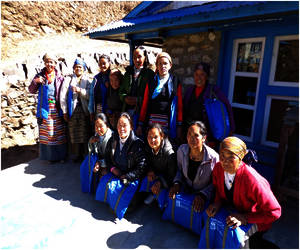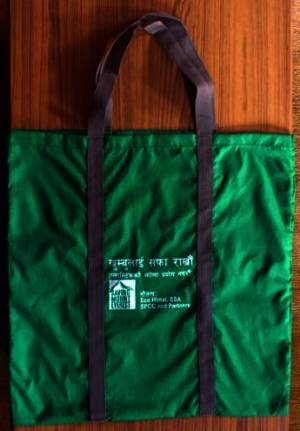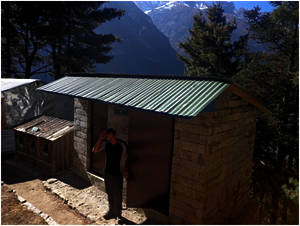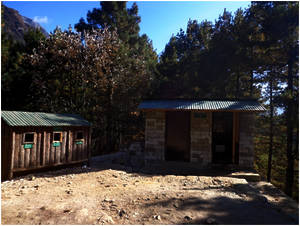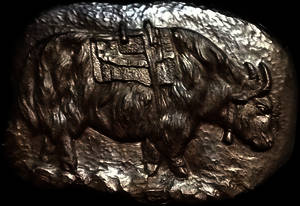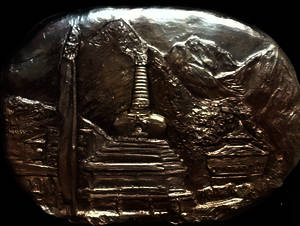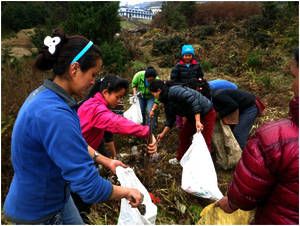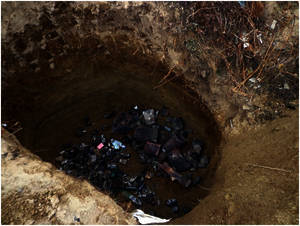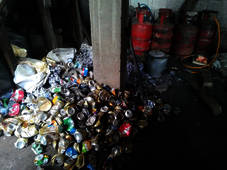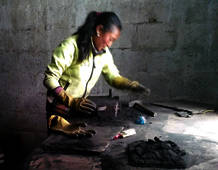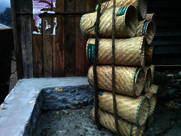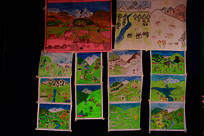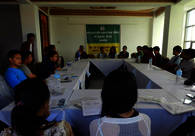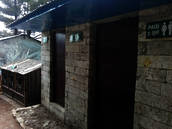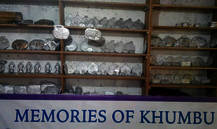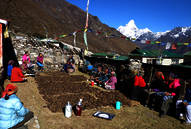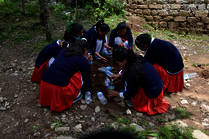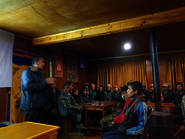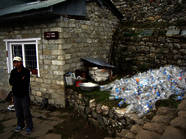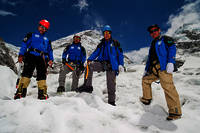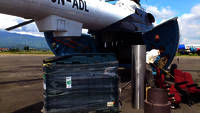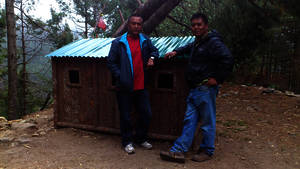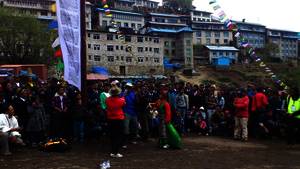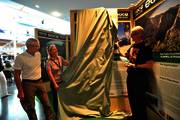PROJECT NEWS
The project was completed by the end of 2013. Learn more about this in the official and final press release by Prof. Kurt Luger.
To raise awareness on harmful effects of plastics on environment and personal health, Eco Himal “Saving Mount Everest – Waste Management Project” in coordination with Sagarmatha Pollution Control Committee (SPCC), women’s group, youth group, Goumpa management committee has distributed reusable cloth bags in different villages including Namche, Khumjung, Khunde, Thamo, Thame, Phurte. These bags are produced in Kathmandu with long lasting clothes, which is expected to last several years with regular use. Size and design of these particular bags are finalized with local people’s requirement.
Along with distribution of reusable cloth bags, awareness on importance of local’s contribution toward proper waste management system concept of waste segregation, etc. was explained to the villagers. Participants were encouraged to use only reusable cloth bags for their weekly shopping. Due to good material, attractive size and encouragement from the project, the people are seen carrying this bag in every occasion, while the demand was so high that more bags had to be produced to meet the demands. One bag was provided to one household but to those who participates in the workshop or trainings.
Apart from having many lodges and restaurants along the trail in Mt Everest region, there is not enough public toilet facility for tourist, local traveler and porters. The porters are enforced to defecate openly as they do not stay in lodges or eat at any of the larger lodges. With the objective of keeping the whole region clean by providing sanitation facility for tourist, locals and porters, Eco Himal “Saving Mount Everest – Waste Management Project” in cooperation with Sagarmatha Pollution Control Committee (SPCC) constructed three modern public toilets along the trekking trail.
Toilets in Top Danda (First Everest View point) and in Meshulung by the police check point before reaching Namche have been completed. The sites are chosen, as large numbers of trekkers and mountaineers during peak season rest at Top Danda after ascending uphill from Larcha Bridge. This is a place where visitors enjoy the view of Mount Everest and other high peaks while taking a good rest after the long climb. Another one is at t he check post where visitors have to wait to register their entry.
These modern toilets have two rooms. One room is for paying clients that is well equipped wash basin and other room is for free. The fee is charged to maintain the toilets clean and for its sustainability, while the free one is to encourage the porters to use the toilet. Water for the toilet, for people to drink or for washing is brought through pipeline from nearby sources. Construction of these modern human waste facilities is expected to maintain cleaner environment and hygienic behavior for tourists, local travelers and porters.
Packaged cardboard, stationery paper, metals, aluminum, textile are common waste in the Everest Region. Study revealed that 22% of total waste composition is only paper and cardboard, whereas 13% metal and textile (Vienna University of Technology, 2011). There were no feasible alternative to manage these wastes, other than burn, incinerate or dump in the pits.
To introduce modern and systematic waste management system in Khumbu and to promote 3R concept, Eco Himal “Saving Mount Everest - Waste Management Project” has initiated paper and aluminum recycling program in the region. Selected people from the region were brought to Kathmandu, where they received special trainings both in Aluminum and paper recycling techniques. These people have been training the interested local people and the program is still ongoing. These training programs were organized in coordination with Khumbu Multipurpose Cooperative Pvt. Ltd and Sagarmatha Pollution Control Committee.
To bring this into reality, production of aluminum souvenir in Namche has already begun in a rented house. An open space near the Namche waste storage house is under consideration to build a paper recycling house. The paper briquette making machines are manual that is time consuming, hard labor work and low production. Therefore, electrically run machines that produce briquettes in large numbers without hard labor work is under discussion with technical institutes in Kathmandu.
Chorkang is a small settlement in north-west of Namche Bazar, mostly occupied migrants for local tea shops and basic supply shops. People from this settlement have been dumping their waste in the incinerator plant constructed by Sagarmatha Pollution Control Committee (SPCC) but some of the families just dump the wastes along the hill slope. To control such illegal activities and to make people responsible towards their waste, one day cleanup program and reformation of waste management committee was conducted jointly by Eco Himal, Saving Mount Everest - Waste Management Project and SPCC in coordination with locals in Chorkang. During this awareness workshop and cleanup program, locals actively collected the burnable and non burnable waste scattered in the surroundings. Secondly, locals segregate unsystematically dropped waste around the incinerator plant at Chorkang. Burnable waste was burned systematically and the non burnable were segregated and handed over to SPCC for further management.
In April and May 2013, a quantitative study explored the relationship between behaviour and the waste issue as a consequence of unsustainable tourism development in Sagarmatha National Park (SNP). Thus, a questionnaire survey was conducted among 350 visitors. It set out to identify tourists’ behaviours, attitudes, and knowledge towards solid waste and solid waste management and to determine factors that have the greatest influence on tourists’ waste behaviour. As a result, it can be noted that age is the most significant predictor for waste behaviour. The age group >60 and 20-29 behave in a more environmentally compatible manner than other age groups. The findings also show that the majority of respondents is very aware of waste problems. Furthermore, nearly 75% of respondents wish to be better informed about environmental issues in SNP. About 55% of respondents support a total ban of plastic bottles and almost 80% prefer using safe drinking water from springs instead buying water bottles in SNP. Simple measures such as upgrading the information system and natural drinking water facilities, could improve the waste management situation considerably. The study was part of a master thesis at the University of Vienna and conducted by Eva Posch.
The Saving Mount Everest Projekt in pictures - an exhibition in the Pokhara International Mountain Museum, Nepal . The exhibition starts 8 May 2013. For more information visit http://everest.martinedstrom.com/.
In line with the Saving Mount Everest Project, a custom built incinerator has been transported to Namche Bazar in the Sagarmatha National Park. The environmentally friendly technology has been developed by EvK2CNR, an italian partnerorganisation of EcoHimal at the project.
Read more about this in the report.
In cooperation with the Sagarmatha Pollution Control Committee (SPCC) new waste bins are built along the trekking routes in the Everest region. SPCC is the local institution in charge of waste management and an important partner in the Saving Mount Everest Project.
The waste bins have two separate compartments for different kinds of waste and are made of timber or stone. The simple but solid construction prevents the waste from wind and cattle. Thus the waste is stored save until it is collected and transported to the local waste facilities.
End of May - beginning of June the Namche Festival was celebrated. A photo exhibition informed about the Saving Mount Everest Project and a Street-Drama Group raised important problems and solutions regarding waste. More information you will can get from the report of Phinjo Sherpa, project coordinator EcoHimal Nepal.
News from Saving Mount Everst Project: The European Outdoor Conservation Association (EOCA) supports the Saving Mount Everest Project! The offical presentation took place at the OutDoor 2011 in Friedrichshafen, Germany on 15th July.
EOCA supports conservation work by raising funds from within the European Outdoor sector and promoting care and respect from wild places. Partner of EcoHimal are Bergans and the Alpin Magazin. Bergans is member of EOCA and has nominated the Saving Mount Everest Project. In cooperation and with support of the Alpin Magazin the online-voting was conducted - which led to the success of the Saving Mount Everest Project.
News on alpin.de.
We express our thanks to everybody who has supported us in getting funds from EOCA - team and members of EOCA, Bergans, Alpin - and our busy online-voters!
The swedish TV channel TV4 broadcasts a report on the Clean-Up Campaign of Saving Mount Everest (7th August 2011).
Saving Mount Everest Clean-Up Expedition Team successfully collected over 8 tons of garbage from the World’s Highest Mountain.
The team transported the collected garbage to Namche Bazar where a celebration took place the 29 May 2011. 29 May 1953 is the day that Sir Edmund Hillary and Tenzing Norgay Sherpa reached the summit of Mt. Everest – becoming the first ones to summit the mountain.
For more information and pictures – visit our Blog.
TV4 broadcasted an interesting report of the Saving Mount Everest Project on Monday, 9 May 2011.
A press conference was organized in Kathmandu, Nepal to foster awareness about the project among the media personnel, private and public sectors; national and international organizations and general audience and to garner further support for the project. During the press conference Saving Mount Everest Project Poster was launched by the chief guest Mr. Kishor Thapa, Secretary for Ministry of Tourism and Civil Aviation, Government of Nepal.
The press conference program was graced by prominent personalities of the Nepalese Tourism Sector and almost all the media houses in Nepal. The press conference was jointly organized by Eco Himal Nepal and Everest Summiteers' Association (ESA) of Nepal in collaboration with Nepal Tourism Board (NTB).
View the poster of the Press Conference in Kathmandu.
We had a press conference in Stockholm - the 28th January 2011 - view the photos of the conference!
Nepal Tourism Year 2011 - A National Camgaign!
Saving Mount Everest Press Release (18th January 2011)
Please download our press release!





